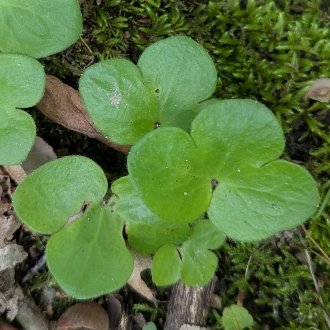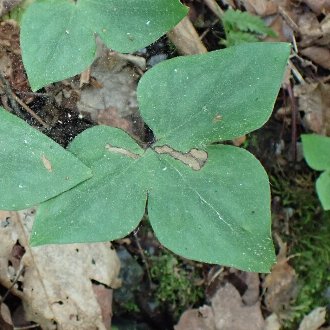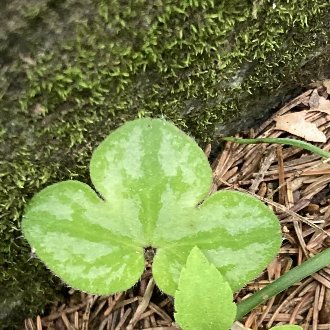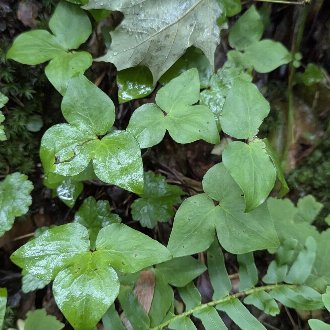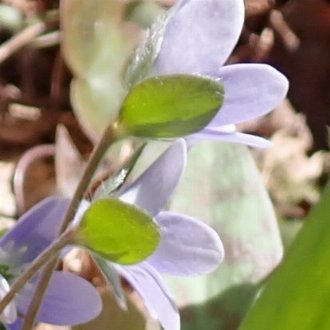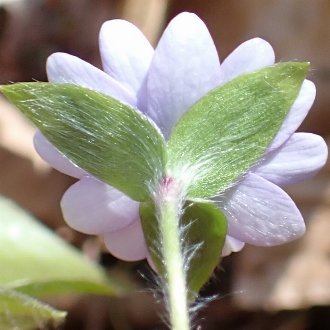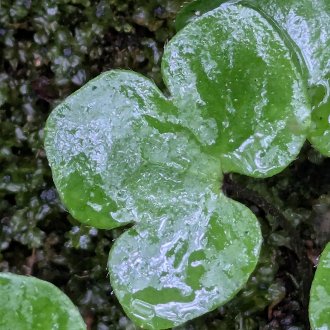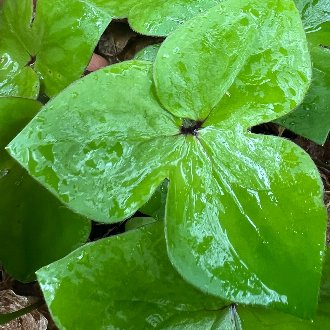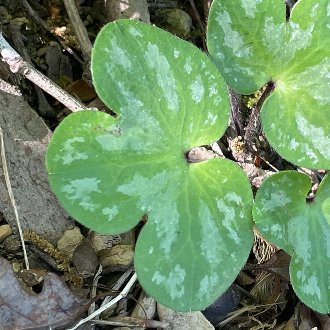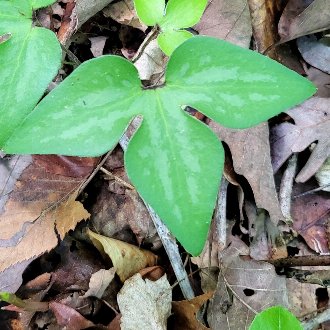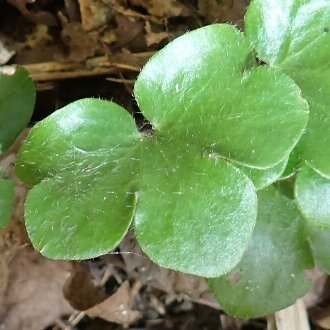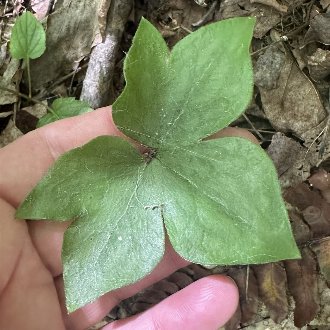Round-lobed Liverleaf vs Sharp-lobed Liverleaf
This guide is under construction and has not been published yet. It may have errors. When in doubt, double-check other sources for definitive ID.These two taxa are visually similar, have a large range of overlap, and are sometimes treated as varieties of the same species, although we separate them. Both occur in moist forests. They are easily distinguished by leaf shape. H. americana ranges farther north, southeast, and southwest but has a large range gap in the interior of the continent. It is more likely in mixed woods containing both conifers and deciduous trees, and ranges onto more acidic soils. H. acutiloba has a more restricted range near its borders, but ranges into this gap in IA, IL, southern IN, eastern MO, western KY, and adjacent regions. It is more restricted to deciduous woods, particularly on calcareous or mafic soils. These species can hybridize, so it may not be possible to identify all individuals to species level.
Round-lobed Liverleaf (Hepatica americana) | Sharp-lobed Liverleaf (Hepatica acutiloba) |
Leaf lobes are blunt-tipped. Photo © Skyler Principe, CC BY 4.0. | Leaf lobes are sharp-pointed. Photo © Steven Lamonde, CC BY 4.0. |
More likely in mixed woods containing some conifers, where soil is more acidic. (Note needle litter in photo.) Photo © er-birds, CC BY 4.0. | More likely in strictly deciduous woods, especially on calcareous or mafic substrates where soil pH is higher. (Note leaf of sugar maple, a tree preferring calcareous soils.) Photo © Alina Martin, CC BY 4.0. |
Bracts under each flower make a wider (more obtuse) angle at their tip. Photo © Steven Lamonde, CC BY 4.0. | Bracts under each flower make a narrower (more acute) angle at their tip. Photo © Larry Jensen, CC BY 4.0. |
Sinuses between lobes are shallower, often reaching at most halfway to the petiole (stem attaching to the base of the leaf) and sometimes reaching much less far. Photo © Dan Bender, CC BY 4.0. | Sinuses between lobes are deeper, often reaching deeper than halfway to the petiole. Photo © Cy Stavros, CC BY 4.0. |
Middle lobe (measured along the leaf midrib from the lobe tip to the deepest point on the sinuses) averages shorter (usually 50-70%) relative to the total length of the leaf. Photo © Jacqueline Raiford, CC BY 4.0. | Middle lobe averages longer (usually 70-90%) relative to the total length of the leaf. Photo © Curtis Burke, CC BY 4.0. |
Leaves usually have only 3 lobes; rarely up to 5. 5-lobed leaves are relatively less likely. Photo © Larry Jensen, CC BY 4.0. | Leaves usually have 3 lobes, but are more likely to have more lobes, sometimes 5 and rarely up to 7. Photo © Jaime McGuigan, CC BY 4.0. |
Additional Notes
Although these species can hybridize, hybrids are likely much rarer than some sources report. Hybrids may be concentrated in particular regions where the conditions are ideal for hybridization; such occurrences are not the norm throughout the zone of range overlap.Although Flora of North America says that H. americana can only have up to 4 lobes per leaf, and some sources only report it having 3 and never more, we found an instance of a leaf with 5 lobes, so we report that 5-lobed leaves are only relatively less-frequent, not impossible. This characteristic is thus not very useful in ID, particularly relative to the other features which are relatively easy to observe and have little overlap. We include this trait only because it is sometimes mentioned in keys or ID guides.
References & External Resources
These short lists show only links helpful for ID. For a complete list of references and resources also covering other aspects of ecology, visit the links section of the full article on each plant, which is the first entry here.



